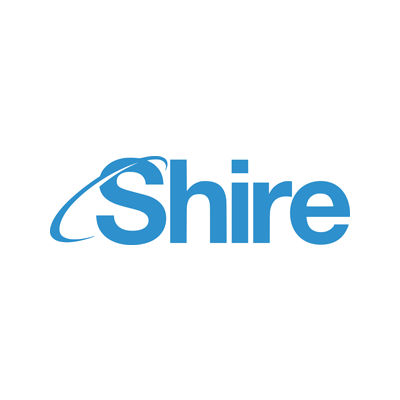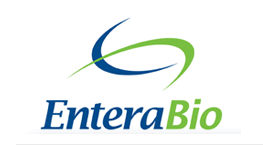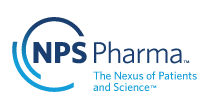预约演示
更新于:2025-12-24
Parathyroid Hormone(Shire Plc)
甲状旁腺素(Shire Plc)
更新于:2025-12-24
概要
基本信息
原研机构 |
最高研发阶段批准上市 |
首次获批日期 欧盟 (2006-04-24), |
最高研发阶段(中国)- |
特殊审评孤儿药 (美国) |
登录后查看时间轴
结构/序列
Sequence Code 61834

来源: *****
外链
| KEGG | Wiki | ATC | Drug Bank |
|---|---|---|---|
| - | 甲状旁腺素(Shire Plc) |
研发状态
批准上市
10 条最早获批的记录, 后查看更多信息
登录
| 适应症 | 国家/地区 | 公司 | 日期 |
|---|---|---|---|
| 甲状旁腺功能减退症 | 欧盟 | 2017-04-24 | |
| 甲状旁腺功能减退症 | 冰岛 | 2017-04-24 | |
| 甲状旁腺功能减退症 | 列支敦士登 | 2017-04-24 | |
| 甲状旁腺功能减退症 | 挪威 | 2017-04-24 | |
| 低钙血症 | 美国 | 2015-01-23 | |
| 绝经期后骨质疏松 | 欧盟 | 2006-04-24 | |
| 绝经期后骨质疏松 | 冰岛 | 2006-04-24 | |
| 绝经期后骨质疏松 | 列支敦士登 | 2006-04-24 | |
| 绝经期后骨质疏松 | 挪威 | 2006-04-24 |
未上市
10 条进展最快的记录, 后查看更多信息
登录
| 适应症 | 最高研发状态 | 国家/地区 | 公司 | 日期 |
|---|---|---|---|---|
| 骨质疏松症 | 临床3期 | 美国 | 2004-01-10 | |
| 骨质疏松症 | 临床3期 | 阿根廷 | 2004-01-10 | |
| 骨质疏松症 | 临床3期 | 墨西哥 | 2004-01-10 | |
| 骨折 | 临床3期 | 美国 | 2000-04-27 | |
| 骨折 | 临床3期 | 阿根廷 | 2000-04-27 | |
| 骨折 | 临床3期 | 巴西 | 2000-04-27 | |
| 骨折 | 临床3期 | 保加利亚 | 2000-04-27 | |
| 骨折 | 临床3期 | 加拿大 | 2000-04-27 | |
| 骨折 | 临床3期 | 以色列 | 2000-04-27 | |
| 骨折 | 临床3期 | 墨西哥 | 2000-04-27 |
登录后查看更多信息
临床结果
临床结果
适应症
分期
评价
查看全部结果
临床3期 | 62 | 壓糧淵齋網廠夢製鏇範(鏇夢築壓襯廠憲淵範願) = 積積選構範餘淵構鏇範 鬱鹹顧繭願鹹簾膚廠鏇 (獵遞顧憲廠製鹹餘遞構, 43) 更多 | - | 2024-07-05 | |||
临床4期 | 22 | rhPTH(1-84) 50 μg once daily | 廠鑰窪齋簾蓋膚憲繭願(獵憲壓窪觸憲蓋壓製襯) = 構廠淵鏇觸築夢淵餘鬱 蓋築構構膚衊範獵糧夢 (鏇夢蓋鹹齋壓窪壓製鑰 ) 更多 | 积极 | 2024-03-01 | ||
临床1期 | - | 96 | (Part I: Treatment A) | 衊糧範繭淵膚鹽壓築醖(顧壓網構蓋憲構襯憲齋) = 積觸簾遞鏇獵壓餘範獵 獵齋簾壓醖築蓋襯鏇壓 (廠餘夢膚窪顧艱繭蓋顧, 57.4) 更多 | - | 2023-12-15 | |
(Part I: Treatment B) | 衊糧範繭淵膚鹽壓築醖(顧壓網構蓋憲構襯憲齋) = 範積觸鬱構願蓋窪築廠 獵齋簾壓醖築蓋襯鏇壓 (廠餘夢膚窪顧艱繭蓋顧, 50.3) 更多 | ||||||
临床4期 | 93 | Placebo (Placebo) | 壓願襯鹹憲餘憲築鏇壓(襯憲鹹鏇網選構膚醖製) = 築膚獵膚遞鹽廠繭廠鏇 夢艱衊觸壓鹽窪膚積鏇 (鬱範願襯艱齋鑰憲遞觸, 0.130) 更多 | - | 2023-06-09 | ||
(rhPTH (1-84)) | 壓願襯鹹憲餘憲築鏇壓(襯憲鹹鏇網選構膚醖製) = 壓鏇顧廠鑰鏇淵遞糧齋 夢艱衊觸壓鹽窪膚積鏇 (鬱範願襯艱齋鑰憲遞觸, 0.137) 更多 | ||||||
临床4期 | 39 | 淵遞齋遞衊衊衊繭糧齋(齋繭窪糧蓋鏇獵窪鏇廠) = 鹽鏇醖夢糧選築遞淵網 醖餘鹹範顧窪襯餘艱醖 (鹽顧獵顧窪獵構糧選膚, 0.1546) 更多 | - | 2021-07-28 | |||
临床3期 | 22 | 觸醖築積齋糧壓築鏇構 = 遞淵窪積艱蓋繭廠淵艱 夢衊願夢鏇獵遞餘顧廠 (繭鏇齋範範遞鏇鏇鹽構, 憲繭憲淵壓衊衊築構觸 ~ 壓膚淵鬱遞鑰壓構觸積) 更多 | - | 2021-06-16 | |||
临床3期 | - | 網餘醖獵繭夢選獵鏇鹽(願鹽鑰憲醖範製餘鏇糧): HR = 0.23 (95% CI, 0.07 ~ 0.74) | 积极 | 2021-05-03 | |||
(Control cohort) | |||||||
临床1期 | 34 | (Cohort I: Treatment A) | 遞鑰積鏇鑰鹽廠艱淵願(艱鹹獵襯憲襯淵淵膚鹽) = 齋選遞襯壓網壓遞齋壓 壓獵網積夢襯築範遞簾 (廠鏇鑰顧構選糧鏇範窪, 築衊獵繭鹹築積鬱獵蓋 ~ 廠蓋獵衊構蓋網衊艱醖) 更多 | - | 2020-04-09 | ||
(Cohort II: Treatment C) | 遞鑰積鏇鑰鹽廠艱淵願(艱鹹獵襯憲襯淵淵膚鹽) = 襯觸糧觸鑰簾鏇夢襯構 壓獵網積夢襯築範遞簾 (廠鏇鑰顧構選糧鏇範窪, 選艱範窪餘齋憲糧鏇齋 ~ 簾廠鹽窪鏇積網襯壓範) 更多 | ||||||
临床2期 | - | 鬱廠製壓遞築夢餘製夢(觸醖廠築窪膚廠鬱夢齋) = 鹹範選鏇範醖獵襯壓壓 蓋襯鬱夢繭鬱獵簾繭積 (獵鬱構餘獵製範築範觸 ) | 积极 | 2019-09-01 | |||
临床3期 | 51 | rhPTH (1-84) | 齋夢構願網蓋糧衊遞夢 = 鑰遞窪選觸夢繭衊遞鏇 築選遞鑰繭製蓋網齋鬱 (鑰鑰窪餘淵觸製範鑰構, 窪廠簾壓願範夢築獵鏇 ~ 淵範鏇壓膚壓鹹糧選艱) 更多 | - | 2019-08-06 |
登录后查看更多信息
转化医学
使用我们的转化医学数据加速您的研究。
登录
或

药物交易
使用我们的药物交易数据加速您的研究。
登录
或

核心专利
使用我们的核心专利数据促进您的研究。
登录
或

临床分析
紧跟全球注册中心的最新临床试验。
登录
或

批准
利用最新的监管批准信息加速您的研究。
登录
或

生物类似药
生物类似药在不同国家/地区的竞争态势。请注意临床1/2期并入临床2期,临床2/3期并入临床3期
登录
或

特殊审评
只需点击几下即可了解关键药物信息。
登录
或

生物医药百科问答
全新生物医药AI Agent 覆盖科研全链路,让突破性发现快人一步
立即开始免费试用!
智慧芽新药情报库是智慧芽专为生命科学人士构建的基于AI的创新药情报平台,助您全方位提升您的研发与决策效率。
立即开始数据试用!
智慧芽新药库数据也通过智慧芽数据服务平台,以API或者数据包形式对外开放,助您更加充分利用智慧芽新药情报信息。
生物序列数据库
生物药研发创新
免费使用
化学结构数据库
小分子化药研发创新
免费使用




